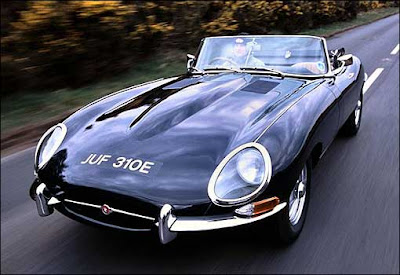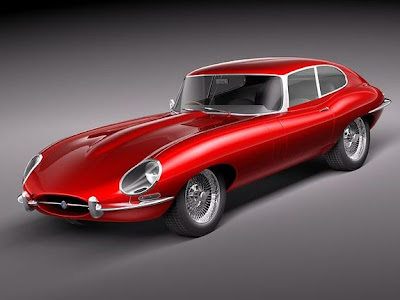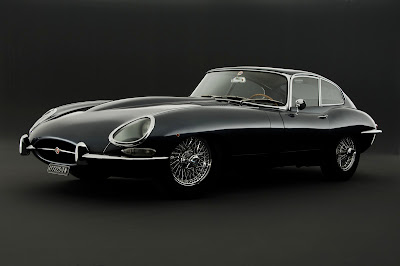It was genuine lust on tires. Jaguar E-type had car enthusiasts' tongues clinging down to their legs when it was presented. And to this day the car orders head-spinning interest whenever it creates the scene
It's still one of the most acknowledged vehicles on the planet and such is the built in rightness of its size, position and cleanliness of range, that it is a lasting display in New York's Art gallery of Contemporary Art.
First created in 1956, the E-Type was initially expected as a replace the Coventry, Britain company's awesome D-Type energy competitors. Jaguar stop rushing quickly after the E-Type's progression started, but function on the car ongoing however, concluding in a generation roadgoing edition presented at the Geneva Generator Present in Goal, 1961. Provided as a two-seat vehicle or athletics car, it was an immediate hit.
Among the car groundbreaking functions was separate back again revocation, a first for Jaguar, each time when almost all streetable athletics vehicles still used a more old fashioned solid-axle installation. But the E-Type's most convincing maintain at plenty of there was a time its rate. The car sleek the rules of aerodynamics and 265-hp 3.8-liter inline six granted it a top rate of 150 mph -- stringently the website of vehicles and ultra-pricey exotics back again then. Although not inexpensive, the Jaguar E-Type offered such excitement for far less cash than similar-performing models.
It's still one of the most acknowledged vehicles on the planet and such is the built in rightness of its size, position and cleanliness of range, that it is a lasting display in New York's Art gallery of Contemporary Art.
First created in 1956, the E-Type was initially expected as a replace the Coventry, Britain company's awesome D-Type energy competitors. Jaguar stop rushing quickly after the E-Type's progression started, but function on the car ongoing however, concluding in a generation roadgoing edition presented at the Geneva Generator Present in Goal, 1961. Provided as a two-seat vehicle or athletics car, it was an immediate hit.
Among the car groundbreaking functions was separate back again revocation, a first for Jaguar, each time when almost all streetable athletics vehicles still used a more old fashioned solid-axle installation. But the E-Type's most convincing maintain at plenty of there was a time its rate. The car sleek the rules of aerodynamics and 265-hp 3.8-liter inline six granted it a top rate of 150 mph -- stringently the website of vehicles and ultra-pricey exotics back again then. Although not inexpensive, the Jaguar E-Type offered such excitement for far less cash than similar-performing models.
The release of the Jaguar E-type at the Geneva Vehicle Show on Goal 15, 1961 is well-known and a considerably good tale. This area protects the relationship the click and public had with the new pet's looks and price. Once again, the photographs encompassing the examining that chronicle’s the vehicle's decent ability on the monitor, the well-known magic size 77RW, and detail the design from head to trail signals are certain eye candies. Anyone looking to buy one of these style years will find the images and specifications important to confirm overall look.
The Series 1 (1961–1968) was presented, at first for move only, in March 1961. The every day market release came four months later in August 1961. The vehicles at this time used the multiple SU carburetted 3.8 liter six-cylinder Jaguar XK6 website from the XK150S. The first 300 vehicles designed had smooth surfaces and exterior lid (bonnet) latches. These vehicles are unusual and more useful. After that, the surfaces were dished to provide more leg room and the double lid latches shifted to in the car. The 3.8-litre website was improved to 4.2 ltrs in August 1964.
Series 2 (1969–1971), Start front signals without cup protects, a wrap-around back fender, re-positioned and bigger front side symptoms and trail signals below the bumpers, better ac helped by an improved "mouth" and double electrical lovers, and uprated braking system are outline of Sequence 2 vehicles. De-tuned in US with double strombergs and bigger device clearances, but still with multiple SUs in the UK and the much stronger device clearances, the website is quickly recognized creatively by the change from sleek refined cam protects to a more commercial "ribbed" overall look. Overdue Series 1½ vehicles also had ribbed cam protects. The inside and dash panel were also newly designed, with musician changes that met US protection rules being taken for toggle changes. The dash panel changes also missing their shaped structure. New chairs were installed, which enthusiasts maintain didn't have the design of the old ones but were certainly more relaxed. Air treatment and energy guiding were available as manufacturer alternatives.
Series 3 (1971–1975), A new 5.3 L twelve-cylinder Jaguar V12 website was presented, with uprated braking system and conventional energy guiding. The short wheelbase FHC body design was stopped and the V12 was available only as a sports car and 2+2 coupé. The sports car used the longer-wheelbase 2+2 floorplan. It is quickly familiar by the large cross-slatted front side grill, flared rim archways and a logo on the back that claims it to be a V12. There were also a very small number of 4.- liter six-cylinder Sequence 3 E-Types designed. These were presented in the preliminary sales literary works.



















No comments:
Post a Comment